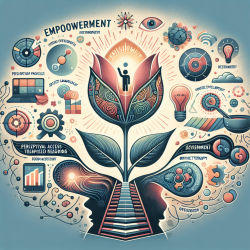As a dedicated practitioner, you understand the profound impact that participation in daily activities has on a child's development. Recent research titled The Comparison of Participation in School-Aged Cerebral Palsy Children and Normal Peers: A Preliminary Study offers critical insights into how children with cerebral palsy (CP) participate differently compared to their peers without disabilities. Here, we’ll explore key findings and actionable steps you can take to enhance participation for children with CP.
Key Findings
- Diversity and Intensity of Participation: Children with CP showed significantly lower diversity and intensity in participation compared to their peers, except in recreational activities.
- Activity Environment: Children with CP primarily engaged in activities within the home, unlike their peers who participated in more diverse environments.
- Role of Others: CP children tended to participate in activities individually rather than in groups.
- Gender Effects: No significant differences were found between genders in participation levels.
Actionable Steps for Practitioners
Based on these findings, here are some data-driven strategies to enhance participation for children with CP:
1. Diversify Activity Types
Encourage a broader range of activities beyond recreational ones. Introduce skill-based, social, and physical activities tailored to the child's abilities and interests. This can be facilitated through structured programs and adaptive tools.
2. Expand Activity Environments
Promote participation in various settings, including community centers, parks, and schools. Ensure these environments are accessible and inclusive. Collaborate with families to identify and overcome barriers to participation outside the home.
3. Foster Group Activities
Design group activities that include children with and without disabilities. This can enhance social skills, peer relationships, and overall enjoyment. Use peer modeling and buddy systems to encourage interaction and support.
4. Leverage Technology
Utilize online therapy services like those provided by TinyEYE to offer virtual group sessions, skill-building activities, and social interaction opportunities. Technology can bridge gaps and provide flexible, accessible options for participation.
5. Continuous Assessment and Adaptation
Regularly assess the child's participation levels using tools like the Children’s Assessment of Participation and Enjoyment (CAPE). Adapt activities and strategies based on ongoing evaluations to ensure they meet the evolving needs of the child.
Encouraging Further Research
While this study provides valuable insights, more research is needed to explore the long-term effects of enhanced participation and the role of cultural and environmental factors. As practitioners, staying informed and contributing to research can help refine and develop effective intervention strategies.
To read the original research paper, please follow this link: The Comparison of Participation in School-Aged Cerebral Palsy Children and Normal Peers: A Preliminary Study.










